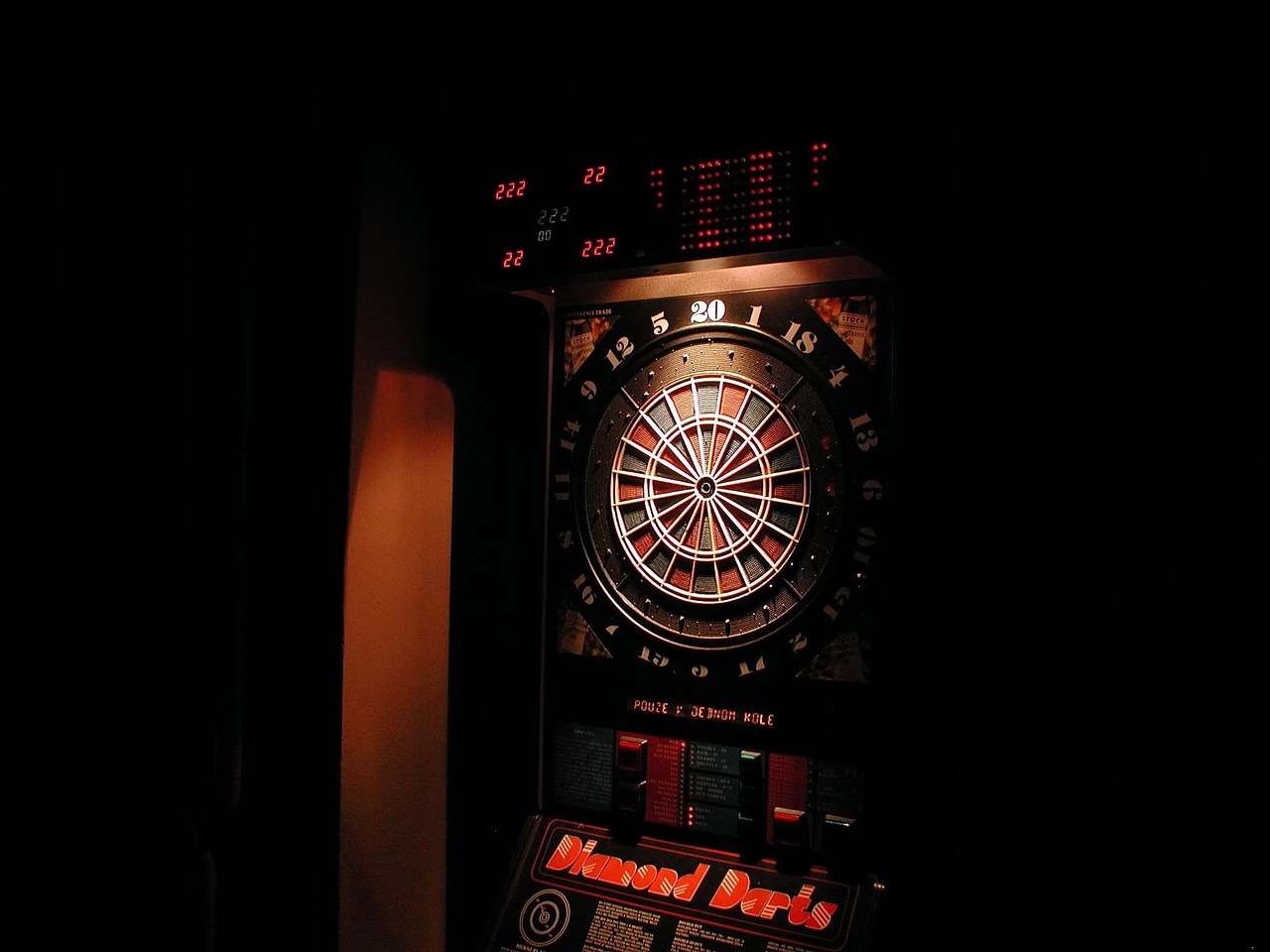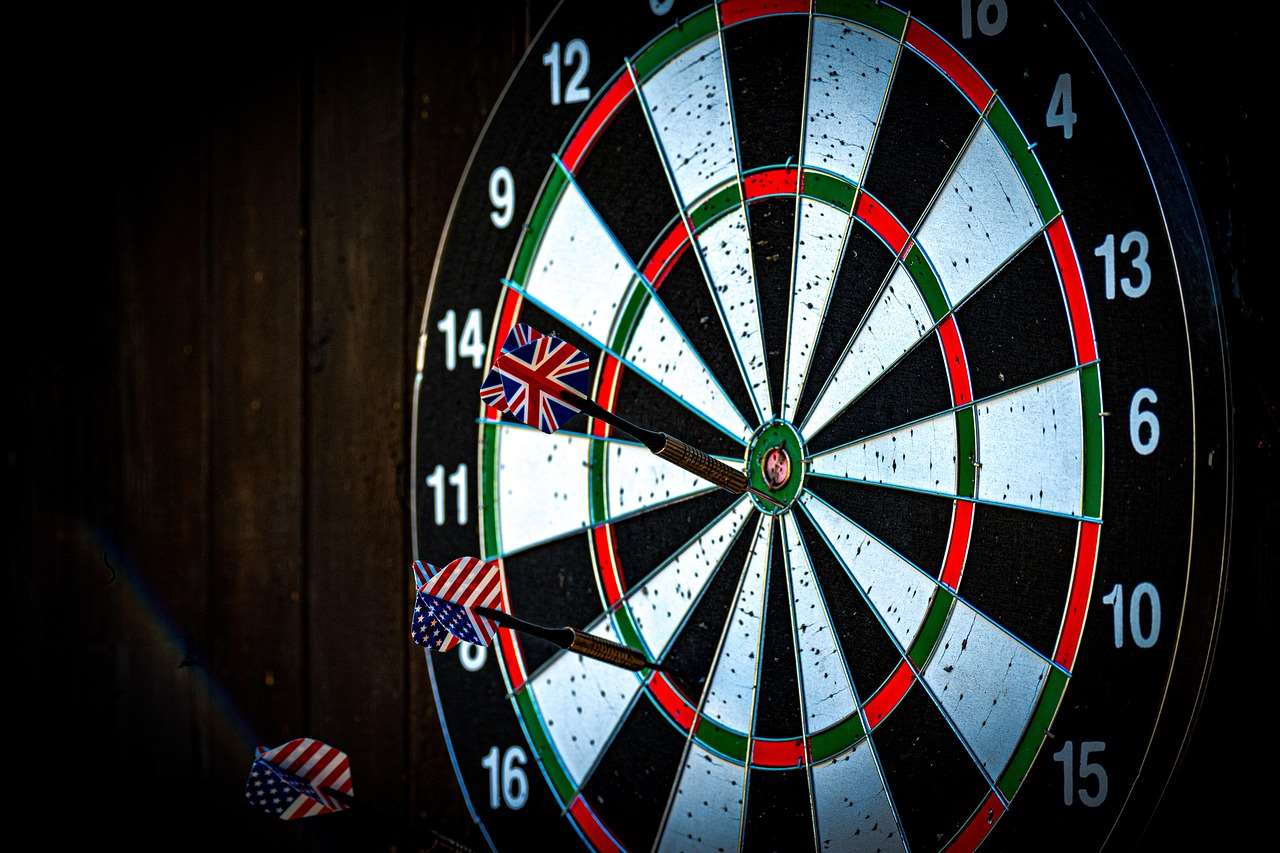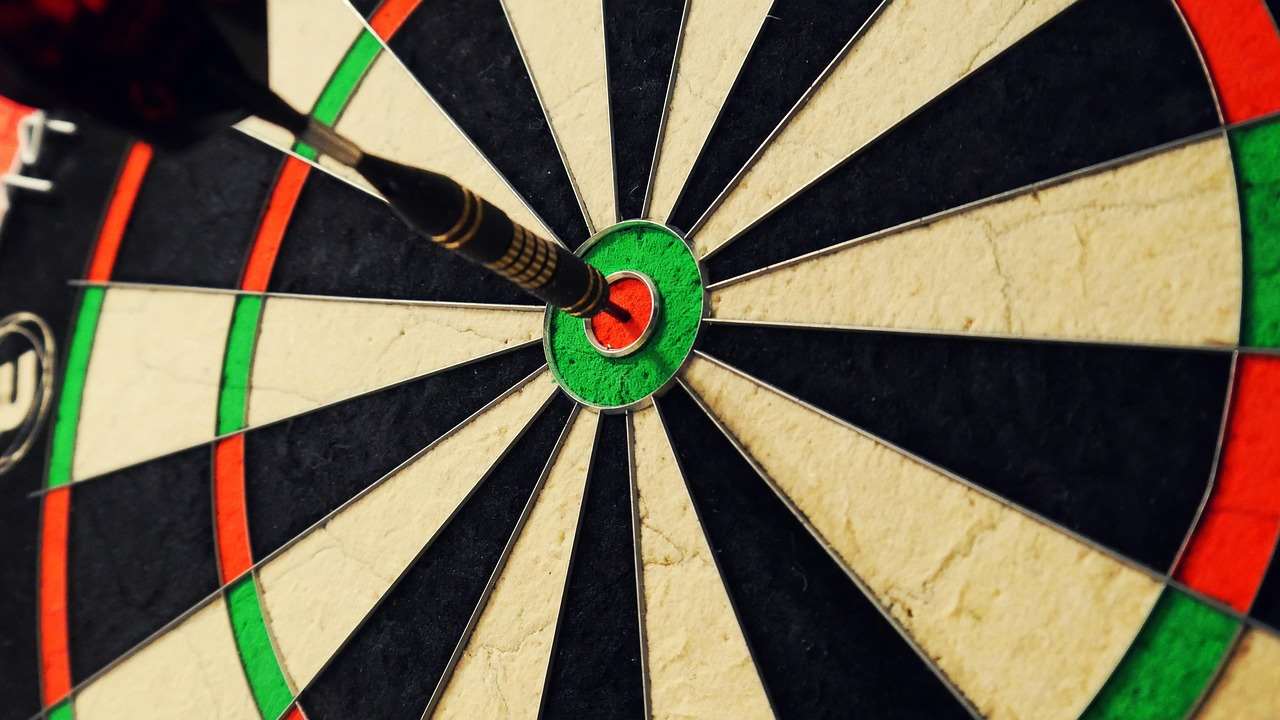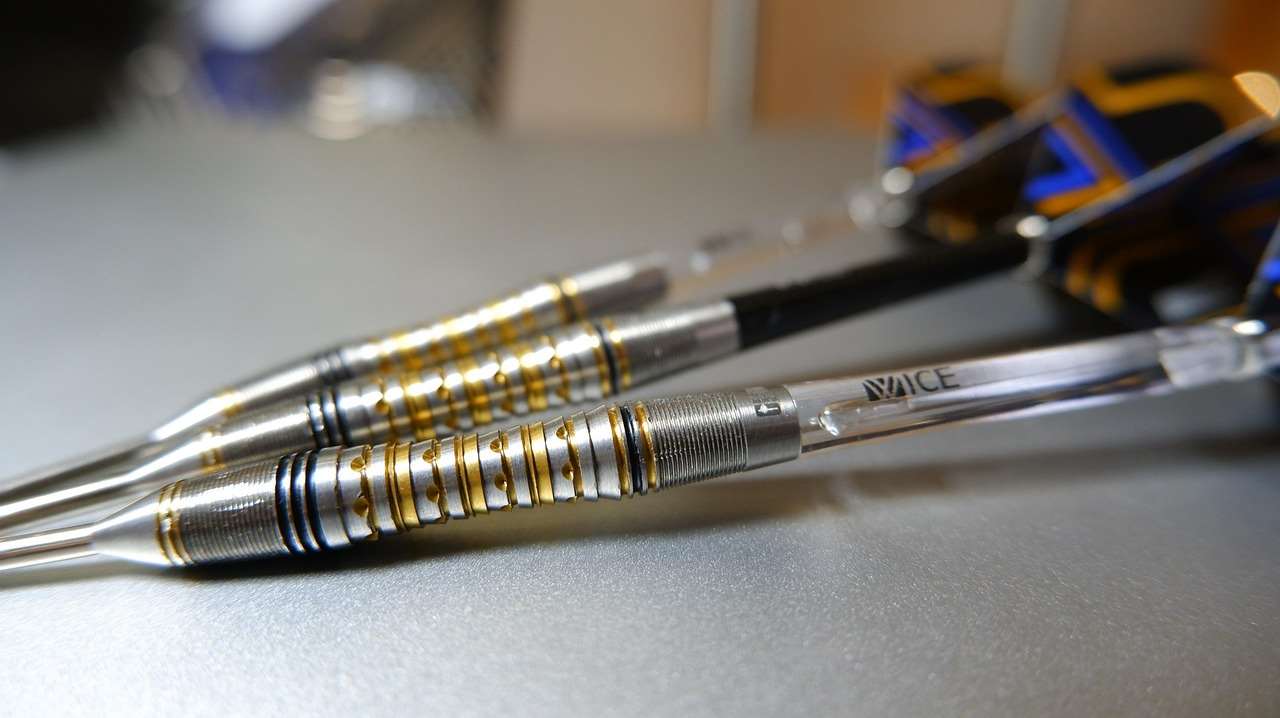Mastering the darts outro, that final sequence of darts to clinch victory, is crucial for any aspiring player; it’s about precision, strategy, and mental fortitude under pressure. This article delves into the nuances of finishing strong in darts, covering everything from checkout strategies to mental preparation and practice drills.
⚠️ Still Using Pen & Paper (or a Chalkboard)?! ⚠️
Step into the future! The Dart Counter App handles all the scoring, suggests checkouts, and tracks your stats automatically. It's easier than you think!
Try the Smart Dart Counter App FREE!Ready for an upgrade? Click above!
Understanding the Importance of a Darts Outro
The darts outro, often referred to as the checkout, is the culmination of all your efforts in a leg of darts. It’s the moment where skill meets strategy, and the ability to finish strong separates the average player from a consistent winner. While consistent scoring is important, a poor checkout game will nullify all the hard work in the early rounds. A solid darts outro strategy involves knowing your outs, practicing under pressure, and maintaining composure when the pressure is on.

Developing Your Checkout Strategy
Having a well-defined checkout strategy is paramount for improving your darts outro performance. This includes knowing common checkout combinations and developing a system that works best for your playing style.
Common Checkout Combinations
Here are some frequently used checkout combinations that every darts player should know:
- 170: T20, T20, Bullseye
- 167: T20, T19, Bullseye
- 164: T20, T18, Bullseye
- 161: T20, T17, Bullseye
- 160: T20, T20, D20
- 157: T20, T19, D20
- 154: T20, T18, D20
- 100: T20, D20 or 20, T20, D10
These combinations should be second nature. Practicing these regularly will help you react quickly in game situations. When learning checkout combinations, focus on those in the 40-100 range first. Once you know these well, start increasing the range.
Creating a Personalized Checkout System
While knowing standard checkouts is helpful, developing a personalized system allows you to tailor your approach based on your strengths and weaknesses. This means identifying which doubles and trebles you’re most comfortable hitting consistently. For example, if you consistently hit D16 well, you might favor setting up checkouts that lead to a D16 finish. A great way to track your checkout progress, and create a personal system, is with the Electronic dart score counter. Start by understanding darts bullseye finish to enhance your strategy.
Mental Game and Pressure Situations
The mental aspect of the darts outro is just as important as technical skill. Successfully navigating high-pressure situations requires mental toughness and a calm demeanor. Consider these areas to improve your overall game.
Staying Calm Under Pressure
Learning to manage pressure is key to consistent checkouts. Deep breathing exercises and visualization techniques can help you stay calm and focused, even when the stakes are high. Before each match, visualize yourself successfully hitting your checkouts. During the match, if you start to feel nervous, take a deep breath and refocus on your target.
Dealing with Missed Doubles
Missing doubles is inevitable in darts. The key is to not let a missed double derail your entire game. Learn to quickly assess your remaining score and adjust your strategy accordingly. Don’t dwell on the miss – focus on the next dart. For instance, if you’re aiming for double 20 and miss inside, leaving yourself on double 10, don’t get discouraged. Instead, refocus and aim for double 10 with confidence. Consider these new approaches using target new darts.

Practice Drills for Checkout Improvement
Consistent practice is essential for mastering the darts outro. Incorporate these drills into your training regimen to improve your checkout accuracy and speed.
The “Around the Clock” Drill
This drill focuses on hitting every double on the board, starting with D1 and progressing to D20. This helps to improve your accuracy on all doubles and build confidence. Set a goal for completing the drill within a certain number of darts, and track your progress over time.
The “Checkout Challenge”
Choose a set of specific checkout numbers (e.g., 40, 60, 80, 100) and practice hitting them repeatedly. Time yourself to see how quickly you can complete each checkout. This drill helps to improve your speed and efficiency. This is much simpler with the aid of darts scorer job for tracking scores.
The “Pressure Practice”
Simulate match-like conditions by setting up a scoring scenario where you need to hit a specific checkout to win the leg. This helps to improve your mental toughness and ability to perform under pressure. Another fun and competitive variation of this drill is to play against a friend or computer opponent. Use different darts to enhance your throw target darts bolide 03.
Equipment and Setup Considerations
While skill and practice are crucial, having the right equipment and a proper setup can also contribute to your darts outro success.
Dart Selection
Experiment with different weights, shapes, and materials to find the darts that feel most comfortable and allow you to throw with the most consistency. The right darts can significantly improve your accuracy and confidence. Think about how how to dart like a pro and select your own equipment accordingly.
Dartboard Setup
Ensure that your dartboard is properly mounted at the correct height and distance. A standard setup provides a consistent playing field and minimizes distractions. Also, it may be useful to get dartboard ring light argos to improve visibility of the dartboard.

Advanced Checkout Strategies for Darts Outro Mastery
Once you’ve mastered the basics, explore more advanced strategies to further refine your darts outro game.
Strategic Bailing Out
Sometimes, it’s wiser to “bail out” from a difficult checkout and leave yourself a more manageable number. This involves consciously choosing to set up a more favorable finish for the next turn, even if it means sacrificing a chance to win immediately. For example, if you’re on 130 and uncomfortable going for T20, D5, consider leaving yourself 85 (T15, D20) instead.
Blocking Strategies
In certain situations, especially in team games, it may be advantageous to “block” your opponent by leaving them on a difficult or undesirable number. This can put pressure on them and increase your chances of winning the leg.
Understanding Your Opponent
Pay attention to your opponent’s checkout preferences and tendencies. If they consistently struggle with certain doubles, try to set them up with those finishes whenever possible.

Analyzing Professional Darts Outro Techniques
Studying the techniques used by professional darts players can provide valuable insights into advanced checkout strategies and mental approaches. Observe how the pros handle pressure situations, choose their checkouts, and adjust their strategy based on the flow of the game. Many professionals will also keep track of darts wm 180 rekord in einem spiel and use the high scores to inform their approach.
Watching Professional Matches
Pay close attention to the checkout strategies employed by professional players during matches. Note which combinations they favor, how they handle pressure situations, and how they adapt their approach based on their opponent’s performance.
Reading Interviews and Articles
Look for interviews and articles where professional players discuss their checkout strategies and mental preparation techniques. These resources can provide valuable tips and insights that you can apply to your own game.
Troubleshooting Common Darts Outro Problems
Even with consistent practice and a solid strategy, you may still encounter problems with your darts outro. Here are some common issues and potential solutions:
Inconsistent Double Hitting
If you’re struggling to hit doubles consistently, focus on your grip, stance, and release. Practice hitting doubles with different levels of pressure to simulate match-like conditions. You might need to adjust your throwing technique. Consider experimenting with a new set of darts to ensure best dart gun for cattle price.
Difficulty with High Checkouts
High checkouts require a combination of accuracy and strategy. Break down the checkout into smaller, more manageable parts. Practice hitting the individual trebles and doubles required to complete the checkout.
Choking Under Pressure
If you tend to choke under pressure, work on your mental game. Practice visualization techniques, deep breathing exercises, and positive self-talk. Remind yourself of your accomplishments and focus on the process rather than the outcome.

The Future of Darts Outro Strategies
As darts continues to evolve, new checkout strategies and techniques are constantly being developed. Staying up-to-date with the latest trends can give you a competitive edge. Players should always stay up to date with new strategies, and find the best local places to learn more such as le centre d’art or c.stand darts渋谷宇田川町・センター街2号店.
Conclusion: Mastering the Darts Outro for Ultimate Victory
Mastering the darts outro is essential for achieving success in darts. By developing a solid checkout strategy, practicing under pressure, and refining your mental game, you can significantly improve your ability to finish strong and secure victories. Remember to analyze your game, identify areas for improvement, and continuously adapt your approach to stay ahead of the competition. Now, armed with this knowledge, go practice your checkouts and elevate your game to the next level!
Hi, I’m Dieter, and I created Dartcounter (Dartcounterapp.com). My motivation wasn’t being a darts expert – quite the opposite! When I first started playing, I loved the game but found keeping accurate scores and tracking stats difficult and distracting.
I figured I couldn’t be the only one struggling with this. So, I decided to build a solution: an easy-to-use application that everyone, no matter their experience level, could use to manage scoring effortlessly.
My goal for Dartcounter was simple: let the app handle the numbers – the scoring, the averages, the stats, even checkout suggestions – so players could focus purely on their throw and enjoying the game. It began as a way to solve my own beginner’s problem, and I’m thrilled it has grown into a helpful tool for the wider darts community.